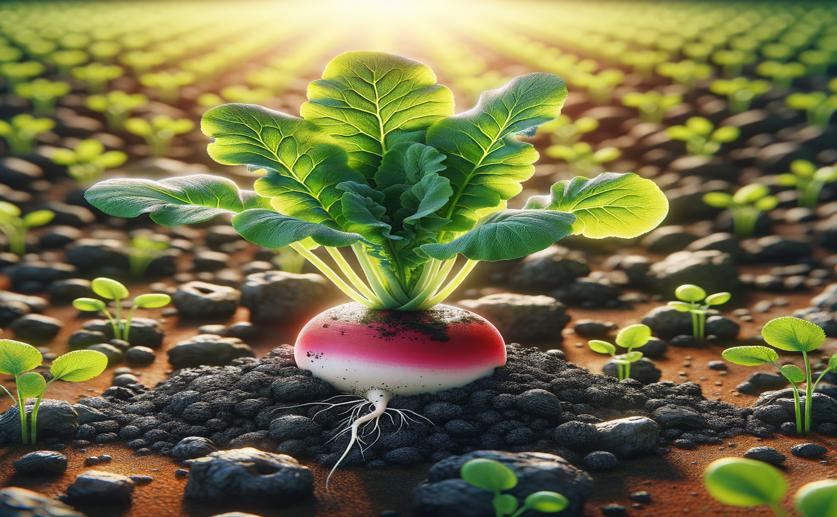
Reducing Heavy Metal Toxicity in Radishes with Natural Compounds and Biochar
Jim Crocker
14th June, 2024

Image Source: Natural Science News, 2024
Key Findings
- Researchers from the University College of Dera Murad Jamali found that combining strigolactones (SLs) and acidified biochar (AB) significantly improved radish growth in cadmium (Cd)-contaminated soil
- The combined treatment of 25 µM strigolactone and 0.75% AB increased shoot length by 17%, root length by 47%, plant fresh weight by 28%, plant dry weight by 96%, and total chlorophyll by 37%
- The combination of SLs and AB was more effective in reducing oxidative stress and antioxidant activities caused by Cd toxicity than either treatment alone, suggesting a synergistic effect
VegetablesEnvironmentPlant Science
References
Main Study
1) Minimization of heavy metal toxicity in radish (Raphanus sativus) by strigolactone and biochar.
Published 13th June, 2024
https://doi.org/10.1038/s41598-024-64596-2
Related Studies
2) Alleviation of cadmium and drought stress in wheat by improving growth and chlorophyll contents amended with GA3 enriched deashed biochar.
3) Strigolactone Alleviates the Adverse Effects of Salt Stress on Seed Germination in Cucumber by Enhancing Antioxidant Capacity.
4) Strigolactone inhibition of shoot branching.



 13th June, 2024 | Jim Crocker
13th June, 2024 | Jim Crocker